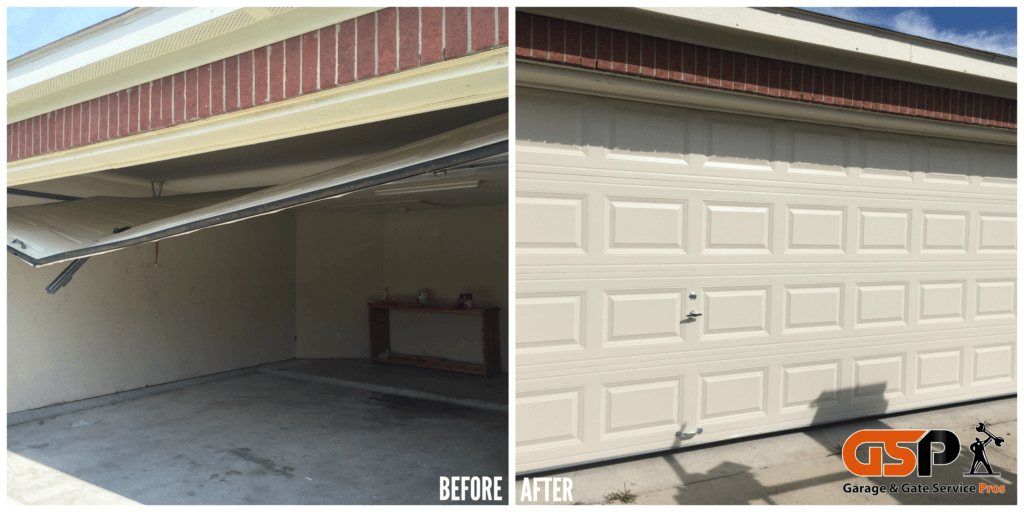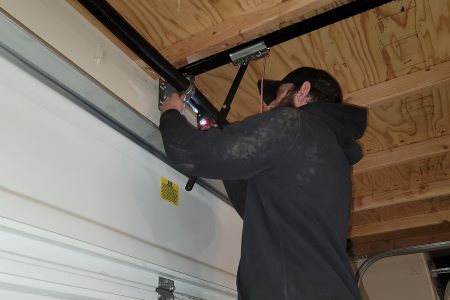Trustworthy Garage Door Repair for Safety and Functionality
Trustworthy Garage Door Repair for Safety and Functionality
Blog Article
Typical Garage Door Troubles and Just How to Deal with Them
Garage doors are vital for both safety and security and comfort, yet they often present a selection of usual concerns that can discourage property owners. Troubles such as too much sound during operation, doors that fall short to open up or shut, misaligned tracks, and malfunctioning remotes can emerge without caution. While some problems may show up uncomplicated to solve, others might need a much more nuanced understanding of garage door auto mechanics. Attending to these issues successfully not only boosts functionality but additionally lengthens the life of the door. One could question what steps are essential to tackle these difficulties efficiently.
Noisy Garage Door Operation
A loud garage door operation can be a significant source of inconvenience for property owners, often showing underlying mechanical concerns. Such interruptions may come from numerous reasons, including damaged rollers, loose hardware, or inadequate lubrication. Identifying the resource of the sound is important for effective resolution.
One typical source of extreme sound is the existence of rusty or damaged rollers. Over time, these parts can deteriorate, leading to grinding or squealing sounds as the door actions. Normal evaluation and substitute of these rollers can considerably reduce sound levels. Furthermore, loosened bolts or screws in the door system can develop rattling sounds throughout operation. Tightening up these bolts ensures a more steady and quieter activity.
Another contributing element is insufficient lubrication of the door's relocating components. Applying a top quality lube to the tracks, springtimes, and rollers can substantially diminish friction and noise. House owners need to do this maintenance occasionally to keep optimum performance.
Finally, the garage door opener may also produce sound as a result of its age or mechanical concerns. If the noise continues despite addressing other aspects, seeking advice from an expert for a thorough examination and prospective fixing might be necessary.
Door Won't Open or Close
Experiencing a garage door that will not open up or close can be unbelievably aggravating and commonly indicates a malfunction within the system. Several elements can add to this issue, and identifying the source is important for efficient resolution.

Following, check the safety and security sensors located at the base of the door. These sensing units can end up being misaligned or obstructed by particles, preventing the door from running appropriately. Clean the sensors with a soft cloth and guarantee they are lined up.
Furthermore, the garage door's internal elements need to be examined. Issues such as a damaged springtime, damaged rollers, or a harmed opener can hamper motion. If any type of components seem harmed, it might be a good idea to get in touch with a professional for repair services.
Misaligned Tracks
(One Call Away)Misaligned tracks can severely disrupt the smooth operation of a garage door, causing functional failures such as irregular activity or full immobilization. This concern commonly occurs due to a selection of aspects, including wear and tear, unintended impacts, or improper installment. When the tracks are misaligned, the rollers can not move openly, which not just strains the electric motor but likewise presents safety and security dangers.
To determine misalignment, visually examine the tracks for voids or uneven spacing. If you discover any type of disparities, it is essential to address the problem without delay - garage door service. Begin by loosening the screws that protect the track to the wall, permitting adjustments. Very carefully touch the track back right into its proper position utilizing a rubber mallet or a similar tool, ensuring it is straight and degree.
As soon as the placement is dealt with, retighten the screws to safeguard the track. For an extra irreversible remedy, take into consideration enhancing the tracks with added braces. Routine maintenance, including cleaning the tracks and ensuring rollers are in excellent problem, can stop future misalignments. By dealing with misaligned tracks quickly, you can restore the functionality of your garage door and boost its long life.
Broken Springs
Among the various elements of a garage door system, busted springs are one of one of the most usual problems that can substantially restrain its capability. Garage door springs are essential for stabilizing the weight of the door, enabling smooth opening and closing. When a springtime breaks, it can cause a door that is difficult to operate or, in many cases, completely unusable.
There are two major kinds of springtimes: torsion springs, which are installed above the door, and expansion springtimes, discovered on either side. Indicators of a damaged spring consist of a door that won't open up, a noticeable void in the springtime, or a loud noise throughout procedure. Attempting to run a garage door with a broken spring can trigger further damage to the door or the opener.
Repairing busted springtimes is not a DIY job; it calls for specialized devices and experience as a result of the high tension included. It is a good idea to consult an expert service technician who can securely replace the springtimes and ensure the door is appropriately stabilized. Regular maintenance and evaluations can help stop springtime failures and expand the lifespan of the garage door system.
Remote Issues

The primary step is to inspect the batteries in the remote. Replace them if they are weak or dead. If the remote still stops working to run, check the garage door opener to ensure that its sensing units are tidy and unhampered. Dirt, particles, or imbalance may impede the signal transmission in between the remote and the opener.
Interference from various other digital tools can additionally restrain remote performance. Ensure that nearby tools, such as wireless routers or cordless phones, are not creating disturbances. garage door service. If interference is thought, try relocating these devices further far from the garage door opener
Sometimes, the remote might need to be reprogrammed. Speak with the manufacturer's guidelines to reset the remote and synchronize it with the garage door opener. If all else fails and the remote remains to malfunction, consider seeking advice from an expert service technician for a complete evaluation and potential substitute of the remote or opener.
Final Thought
(Excellence Guaranteed)In summary, typical garage door issues can considerably affect capability and safety and security. Resolving loud procedure entails lubrication and tightening continue reading this up equipment, while problems with opening or closing need examination of source of power and sensors. Misaligned tracks can be treated via change, although busted springtimes require expert intervention. Push-button control malfunctions commonly occur from weak batteries or interference, which can be fixed with substitute or reprogramming. Proactive maintenance and prompt fixings can guarantee optimum efficiency and durability of garage doors.
Report this page